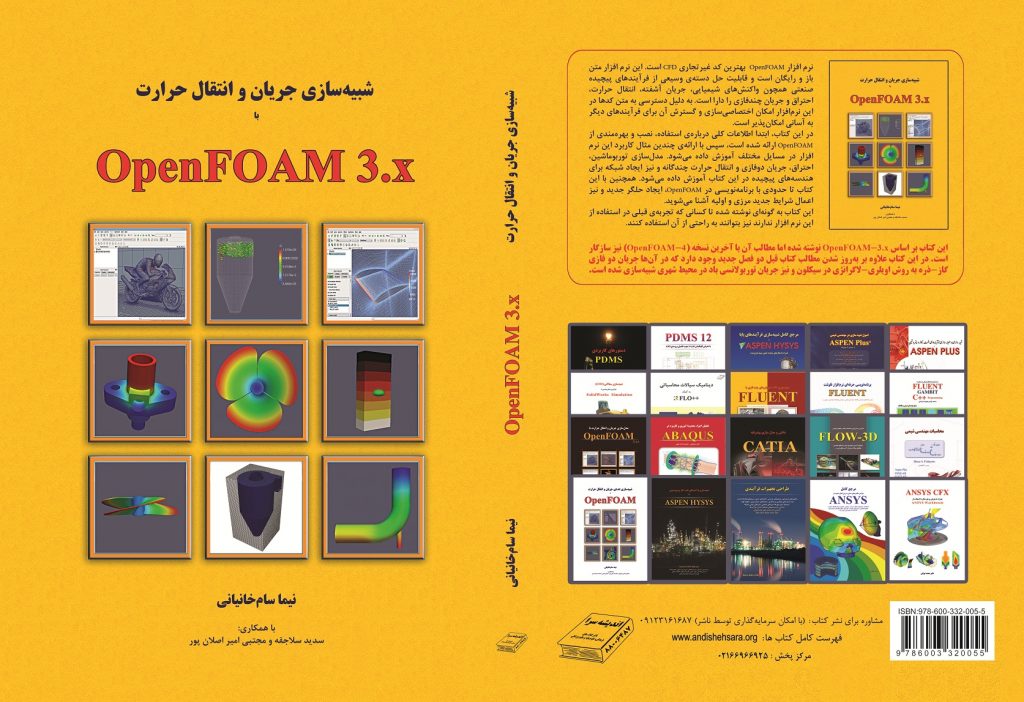In this post, i presented my simulation of free surface over cylindrical spillway using OpenFOAM solver (interFoam).
following steps are conducted for preparing case:
In this study, the numerical analysis on the performance of solar chimney is done using buoyantBoussinesqSimpleFoam.
CFD simulation is helpful for the prediction of ventilation system performance. In this post, I redid the study of Kobayashi [1] using buoyantBoussinesqSimpleFoam in OpenFOAM.
In this short post, the effect of numerical scheme on convection term is investigated. The following problem is considered. More information about this problem can be found in Introduction to Computational Fluid Dynamics [1].
I cooperate with different groups and organization for OpenFOAM training.
IHA (Iranian Hydraulic Association) is one of them. The workshop is held in 3 levels, one introductory level and two complementary levels.
Many different phenomena in industry or nature include a deformable interface for example the water falling from a spillway. The simulation of such events is essential to better understanding of two-phase flow behavior, in order to optimize the design or to calculate hydrodynamic coefficients. The precise and correct modeling of the interface is the key parameter in the simulation of a free surface. There are different interface tracking methods such as VoF (volume of fluid), LS (level set), and FT (front tracking). Each method has its own advantages and disadvantages, however, VoF is becoming the most common interface tracking method due to its ease of implementation and mass conservation. OpenFOAM VoF solver is interFoam. The solver uses a technique called MULES to compress the interface and return the sharp interface. The interFoam is suitable for two-phase isothermal incompressible system. The derived solvers from interFoam is:
The third edition of my book on numerical simulation using OpenFOAM is available for Persian users in book stores.

OpenFOAM prior disadvantage is the lack of wide exclusive user guide, so user needs to go through Internet to learn OpenFOAM stuffs. Here, i provide some useful links, which contain interesting tutorials and trainings. This page will be update with my new findings.
As a part of my Ph.D. thesis, I extended an OpenFOAM solver interFoam to consider mass transfer due to boiling and condensation, new solver is called phaseChangeHeatFoam. It is available in git, it can be downloaded and compiled with the following commands in a Linux terminal.
git clone https://github.com/NimaSam/phaseChangeHeatFoam/ cd phaseChangeHeatFoam/Application/ chmod +x All* ./Allwmake
The zip file can be downloaded from here.
I wrote the first edition of OpenFOAM book around 5 years ago in Persian. The book was based on OpenFOAM-1.6. The aim of that book was to shorten the process of OpenFOAM learning. It was 5 chapters that included some simple and introductory examples. It covered different parts of OpenFOAM utilities, solvers and programming.
Studies on wind flow are received a huge interest in recent decades. Wind is known as a clean source of energy. Moreover, it plays a great role in urban ventilation to control air pollution. Therefore, wind flow simulations around single or complex buildings are raised up in recent years. My colleagues and I made several wind flow simulations. These simulations are conducted with OpenFOAM solver simpleFoam which is a stead-state solver. OpenFOAM supports a wide class of turbulence models. Different turbulence models are examined in these simulations to find the best result with experimental data. My experience shows kOmegaSST is the most suitable RANS turbulence model for simulation of wind flow.
A brief report of our simulation is presented below:
welcome to my personal website !
Here, I will share my current interests and projects with you.
It is under construction :), so be patient!